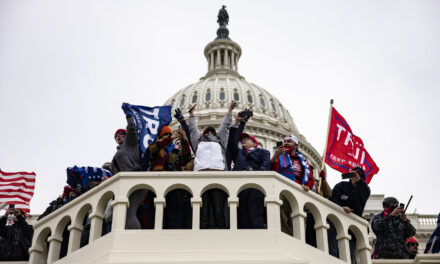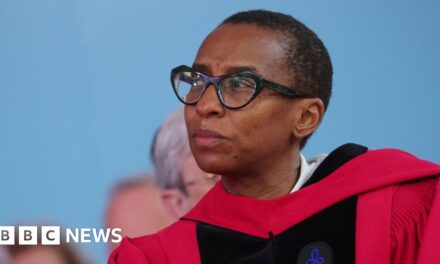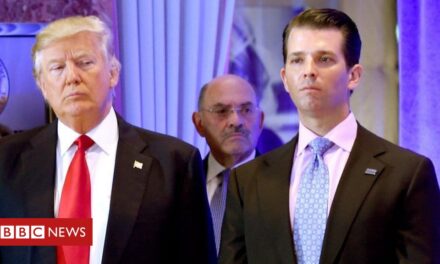
Many Poorer Nations Are Still Waiting for First Vaccine Doses

Image

As the United States prepares to offer Covid booster shots to tens of millions of people, representatives of the World Health Organization continue to sound the alarm over the disparity in vaccine access globally, with the world’s poorest countries struggling to get even a first dose into their citizens’ arms.
Gordon Brown, the former British prime minister who is now the W.H.O.’s ambassador for global health financing, said on Thursday that there was a shortfall of 500 million doses in the global South, while 240 million doses were lying unused in the West. The number of excess doses is projected to reach 600 million by the end of the year, Mr. Brown added.
Mr. Brown spoke on the same day the Centers for Disease Control and Prevention endorsed booster shots of the Moderna and the Johnson & Johnson Covid-19 vaccines for tens of millions in the United States.
In Africa, meanwhile, only nine countries had met a target of vaccinating 10 percent of their populations against Covid-19 by the end of September, the W.H.O. reported.
“Wealthy countries must let go of reserved doses and cede their place in the queue, allowing Covax and the African Union to buy the vaccines the continent seeks and stands ready to finance,” Dr. Matshidiso Moeti, the W.H.O. regional director for Africa, wrote in a Times guest essay last month, referring to the United Nations-backed program to inoculate the world against the coronavirus.
“Africa and other parts of the world need these vaccines. Now,” she added.
Mr. Brown called for military airlifts to help deliver unused doses to lower-income countries, particularly an estimated 100 million doses that had a use-by date before December and would otherwise end up being destroyed.
“We are talking about waste on a colossal scale if we don’t do something about this,” Mr. Brown said in an interview with BBC Newsnight on Thursday.
He and other health officials argue that low inoculation rates globally could undermine progress against the pandemic by creating room for the virus to mutate and spread.
“You can’t solve this problem without vaccinating the whole of the world, not half of the world,” Mr. Brown said.
The W.H.O. estimates that 11 billion Covid vaccine doses are needed worldwide to turn the tide of the pandemic, but so far production and distribution have been concentrated in Western countries.
Last month Covax slashed its forecast for the number of doses it expected this year, further undercutting a program that has been beleaguered by production problems, export bans and vaccine hoarding by wealthy nations.
According to government figures collated by the University of Oxford’s World in Data project, about 77 percent of shots administered worldwide have been in high- and upper-middle-income countries. Only about 0.5 percent of doses have been administered in low-income countries. Africa is the region with the lowest inoculation rate, with less than 8 percent of the population vaccinated.
The Biden administration has said that it can provide boosters to tens of millions of Americans while also donating vaccines to poorer nations. On Thursday, the White House announced that it had delivered more than 200 million doses of the Covid-19 vaccine to more than 100 countries, the most from any country in the world, according to the State Department.
“Doing more than everyone else shouldn’t be the bar,” said Craig Spencer, director of global health in emergency medicine at NewYork-Presbyterian/Columbia University Medical Center. “It’s just not nearly enough.”
Image
The residents of Melbourne have spent more days in lockdown — 262, to be precise — than people anywhere else in the world. And on Friday, they emerged from it with cheers, and a dose of caution, as restrictions began to ease.
During those lockdown days, residents in Australia’s second largest city were allowed to leave their homes to buy food and to exercise, and to do authorized work. For the past two and a half months, they have also been subject to a 9 p.m. curfew.
As the clock struck midnight on Friday and these restrictions were lifted, residents greeted their new freedoms with cheers and screams.
It’s hoped that this will be Melbourne’s last lockdown — with 70 percent of residents age 16 and older now fully vaccinated, the government’s pandemic recovery plan envisages such restrictions becoming rare.
“I’m trying not to sound like some kind of soppy dad here, but I am proud, bloody proud of this state,” Daniel Andrews, the premier of Victoria, the state of which Melbourne is the capital, said on Twitter. “We’ve gone through such a hard time together, this pandemic has been exhausting in every sense of the word.”
But with case numbers still high — Victoria recorded 2,232 new infections on Thursday, its second highest daily total since the start of the pandemic — the city’s reopening is happening gradually.
Up to 10 vaccinated people can gather at home. Hairdressers, restaurants and bars can taje in more customers. Retail stores can reopen — but only for outdoor business, a condition some business owners have labeled “ludicrous.”
Indoor retail outlets, gyms and entertainment venues will be able to reopen once 80 percent of the population is fully vaccinated.
On Friday morning, street musicians returned to Melbourne’s central business district, which had fallen silent during the pandemic. Most shops were still closed but long lines snaked out of cafes and hair salons.
“It’s nice to see everyone out and about again,” said Lionel Lam, 33, one of a dozen people waiting outside a barbershop. He’d bought clippers to cut his own hair during lockdown, he said, “but I’m excited to get the back done.”
On Friday, the authorities in Victoria announced that, starting Nov. 1, vaccinated Australian citizens returning to the state from overseas would not need to quarantine. That brought the state in line with the state of New South Wales, which made a similar announcement last week.
Image
Thailand said it would vastly expand the number of countries from which fully vaccinated people can visit starting Nov. 1, racing to attract tourists who might otherwise decide to visit other countries first as Europe and the Americas continue their reopening plans.
Fully vaccinated travelers from 46 countries will be granted quarantine-free entry to 17 tourist provinces including Bangkok, up from the 10 previously announced, under a plan unveiled by Prime Minister Prayuth Chan-ocha on Thursday. The United States and China are among the countries on the list.
The plan would make Thailand one of the least restrictive countries for tourists to visit in Asia. South Korea now allows travelers of 49 nationalities to apply for permission to enter without a visa.
Currently, vaccinated visitors must quarantine for seven days upon entering Thailand, except if they arrive on a direct flight to the island of Phuket, where they are exempt from quarantine as long as they stay on the island. After seven days in Phuket, they can tour other parts of the country.
Even as Asia makes strides in vaccinations and slowly eases its Covid curbs, travelers across the region remain under some of the strictest international border rules in the world. Those restrictions have hampered economic recovery, particularly in countries that relied heavily on foreign tourists before the pandemic.
While some Asian countries have cautiously allowed small numbers of tourists to enter, others, including China and Japan, have kept borders closed to tourists since the start of the pandemic.
Source: https://www.nytimes.com/live/2021/10/22/world/covid-vaccine-boosters

















